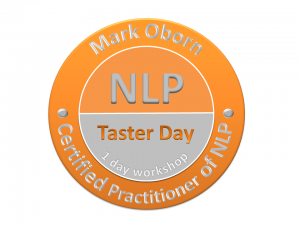Communication using NLP – Some Neat Linguistic Tricks
 NLP is a great tool to use the communication as the ‘L’ in NLP stands for linguistics. Having an understanding of linguistics, meaning the words we use in everyday language, is a great way to understand yourself and other people.
NLP is a great tool to use the communication as the ‘L’ in NLP stands for linguistics. Having an understanding of linguistics, meaning the words we use in everyday language, is a great way to understand yourself and other people.
Once you understand some of the linguistic patterns that people have a tendency to use unconsciously, it allows you to understand more about what they are thinking which means you can communicate at a far deeper level with them.
Communication in the workplace is one of the great places to use this, if you could better understand the people around you, and make yourself understood how much simpler would life be?
So in this blog post on going to go through some of the classic linguistic patterns that we all use, break them down into three main areas and look at some ways that you can use this practically everyday.
Deletions, Distortions and Generalisations
The three broad areas of linguistic patterns formed are deletions, distortions and generalisations. There is so much information around us in the world that we have take in every second that our unconscious mind will invariably delete, distort and generalise that information so that we can make sense of it. We do the same when we speak.
Deletions.
These are linguistic patterns which have a tendency to delete information within them. When you hear these patterns being spoken by another person it is an indicator of the way their mind is thinking and what they are deleting. So here are some examples.
Mind reading.
Example. “You don’t like me”.
This is when someone is claiming to know the internal state of somebody else, there is absolutely no way that anyone can read the mind of another person. If someone said this to you it could be useful to respond with ” how do you know I don’t like you specifically?”. This then takes the conversation to a level of detail which can be discussed.
Cause and effect.
Example: “You make me sad”.
This form of deletion is very common and people often use it. They could be indicating that some body or something makes them sad. If we look at the sentence in detail the person that said it is putting ’cause’ outside of themselves. Ultimately we have the ability to feel happy or sad at any time we like, and it is impossible for something else to ‘make’ us feel sad or happy.
Think of a fantastic holiday that you went on, picture yourself sitting on the beach feeling the warmth of the sun on your face, smelling the fresh smells of the seaside and hearing the sounds of the children playing, the waves lapping and the seagulls. You might even want to remember the warm feeling of the sand as it moves between your toes and helps you to relax.
As you think of that holiday now just notice how it makes you feel. Was it the holiday that ‘made’ you feel happy, or was it your internal representation?
You see nothing ‘makes’ you do anything, you always have a choice how you decide to respond or react to anything and so when a person uses the word ‘makes’ it indicates that they are not in total control of the way they think.
A response could be ” How does what I’m doing cause you to choose to be sad?”. This response is putting ’cause’ back with the other person and highlights to them that they are actually choosing to be sad.
More information on NLP cause and effect
Generalisations.
Universal Quantifiers.
These are linguistic patterns which include words such as every, never, everyone, all and no one.
Example: “I never relax”
A response to this could be “Never? How do you know that you aren’t relaxed when you are asleep?”. This could lead the other person to realise that the use of the word ‘never’ is actually not true, and rarely is the use of a universal quantifier indicated. If someone were to say ” everybody hates me” then as soon as we can find one person that does not hate them that statement is no longer true.
Universal quantifiers can be quite negative words, being able to spot them in another person and challenge them in a way that helps them to realise that the statement is not true is a very useful skill.
Modal Operators of Necessity.
Generally speaking people will do things out of ‘possibility’ or ‘necessity’. Some people may do a particular job because of all the ‘possibilities’ that their role brings them, some people may do that job because they ‘need’ to.
Of course money is important for going to work and some people do need to go to work for the bare essentials, however, assuming that this is not the case the use of the word need indicates that they are viewing things with the ‘necessity’ to do them.
Example: “I need to work more hours”
A possible response could be “What would happen if you didn’t?”. This simply highlights the alternate possibility of not working so many hours to the other person. This is a linguistic challenge to open up the possibilities of other ways of doing things. If a person thinks they ‘need’ to work more hours, for what purpose? Is it just to earn more money? Is working longer hours the only way to earn more money?
Challenging these statements and looking out for modal operators of necessity open up possibilities to the other person which they may not have thought about. This is a great technique if you are in management or a leadership role.
Deletions.
Comparative Deletions
These words such as bigger, better, more, less, most and less. People have a tendency to use these without really thinking, if we say something is better, then unless we compare it to something we have deleted the thing that it is better than. Marketeers use comparative deletions a lot especially the word ‘better’ as they can save them in straplines and marketing speak without anyone questioning what their product is better than!
Example: “I need to work more hours”
Aha, yes the same example again. Sometimes when we speak there are a lot of linguistic patterns going on in one sentence and in this one there is a modal operator of necessity ‘need’ and a comparative deletion ‘more’. A way to open up the options to this person could be to ask ” More hours, compared to what?”. Again this is opening up the other person’s mind to examine exactly the amount of hours that they are working, once they do this they start to analyse the problem and with the analysis can often come the solution.
“I need to work more hours” could be something that a member of your team says to you, and a typical response could be ” no you don’t!” except with this response we end up with a game of ping-pong when they reply ” yes I do!”.
Using the challenges I mentioned above such as “more hours, compared to what” and “what would happen if you didn’t” will open up your team members eyes and ears to the possibilities of working a different way. This will also allow communication to develop between you rather than get lost in the ping-pong yes I do, no you don’t pantomime conversation!
Excercise
Over the next week I would like you to listen out for these trigger words in other people’s conversations, watch live interviews on the television and see if you can spot the use of any of these linguistic patterns. Once you tune your ears into them you will be amazed at the number of times people use them.
 Do you want to learn more?
Do you want to learn more?
Some of these linguistic patterns are something that we talk about and practice on my NLP Taster Days, please do visit my website
to find out when the next day is and ensure you book your place.


